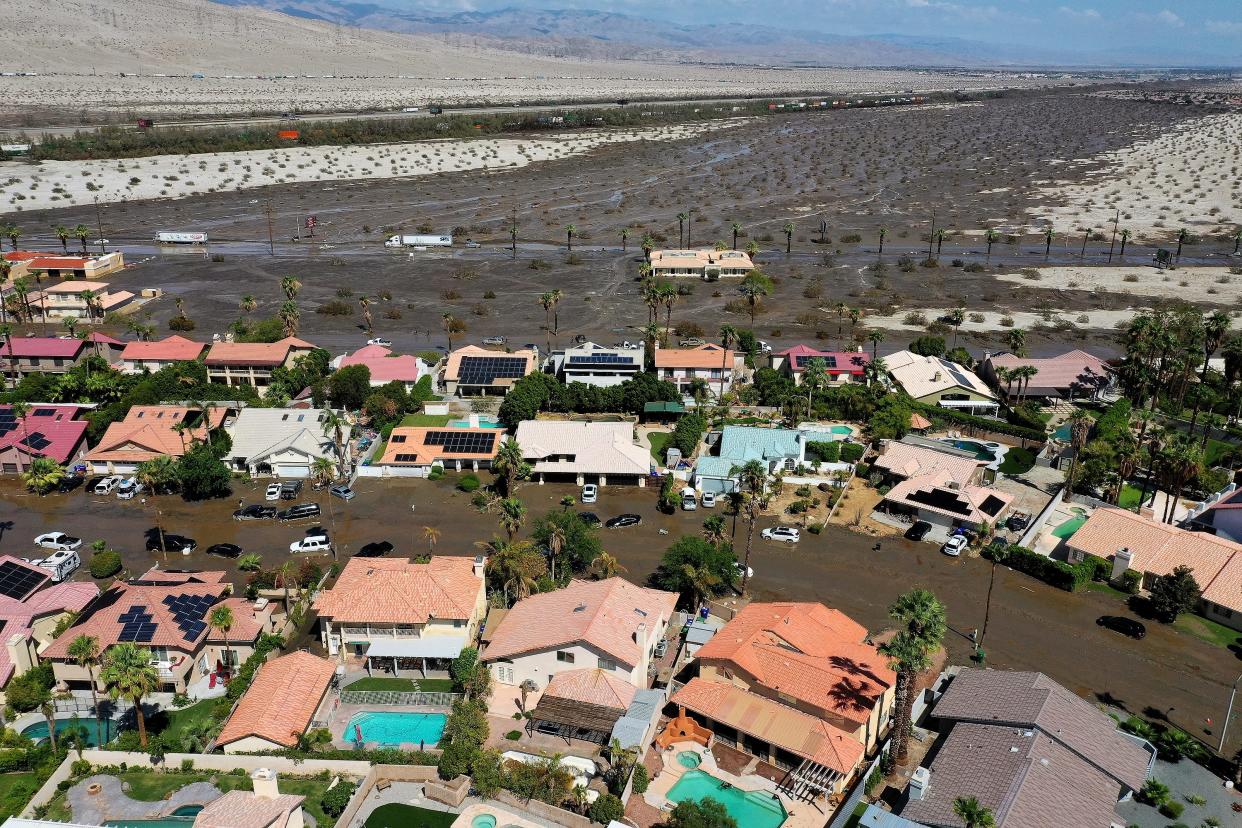Hilary's aftermath: Check if your neighborhood is at risk for flooding in future rainstorms

While the Coachella Valley was still recovering from Tropical Storm Hilary in early September, monsoonal thunderstorms hit the region, bringing up to 3 inches of rain in some areas and causing flash flooding in communities near the Salton Sea, just a week after homes in Cathedral City and elsewhere were flooded during Hilary. The one-two punch of the two storms served as a reminder that extreme weather in the Coachella Valley goes beyond just high temperatures, and that flooding in the desert can be unpredictable.
Here’s what to know about flood risk in the Coachella Valley.
How to check your property on FEMA's flood map
If you’re not sure if you live in a high-risk area for flooding, you can type your address into FEMA’s flood map. Areas in “Zone A” have a 1% annual chance of flooding and a 26% chance of flooding over the span of a 30-year mortgage. Homeowners in Zone A with a federally backed mortgage are required to carry flood insurance.
The California Office of Emergency Services My Hazards map also includes a map of FEMA-designated flood zones, and also maps other hazards such as fire and earthquake risk.
Unincorporated communities are high-risk
In the Coachella Valley, the areas with the largest swaths of high-risk areas are unincorporated communities such as Thousand Palms, North Palm Springs, Oasis and other unincorporated communities near the Salton Sea.
Some neighborhoods near Interstate 10 are also at risk, including the Rio Vista neighborhood in Cathedral City and Talvera in Indio. Horizon Road, located in Cathedral City’s Panorama neighborhood just south of the freeway, was one of the hardest-hit areas during Tropical Storm Hilary.
But even if you live in the cove communities, you should still check out the maps — there are small pockets mapped as “Zone A” throughout the valley.
'Everybody's in a flood zone'
Even neighborhoods outside of FEMA’s identified flood zones aren’t necessarily immune to flooding. Predicting flooding in the desert is notoriously difficult, and across the U.S., flooding often impacts homes outside of the identified flood zones.
As much as 40% of insurance claims under the National Flood Insurance Program are for properties that fall outside of FEMA’s identified flood zones, FEMA spokesperson Frank Mansell previously told The Desert Sun. He added that just 1 inch of water in a home can cause $25,000 in damage.
Mansell says ”flood insurance is always a good option to consider,” even for those living outside of identified flood zones.
“As much as our maps are the best that they were at the time that they were produced, that doesn't negate the fact that Mother Nature has better ideas or doesn't read our maps,” said Mansell. “Everybody’s in a flood zone.”
What about renters?
Just like how standard homeowners' insurance doesn’t cover flooding, typical renters’ insurance also won’t cover the cost of replacing a renter’s belongings if they’re destroyed by a flood. Both groups can purchase flood insurance through the National Flood Insurance Program.
This article originally appeared on Palm Springs Desert Sun: Tropical Storm Hilary aftermath: What to know about flood risk

